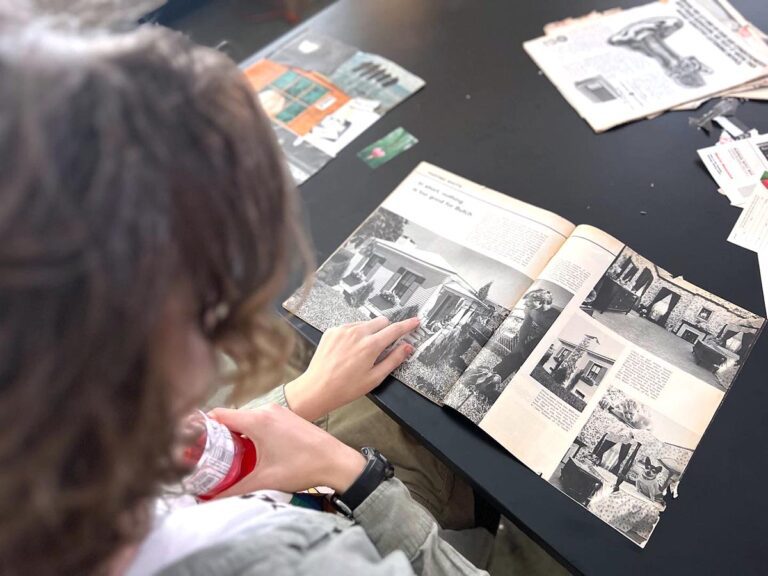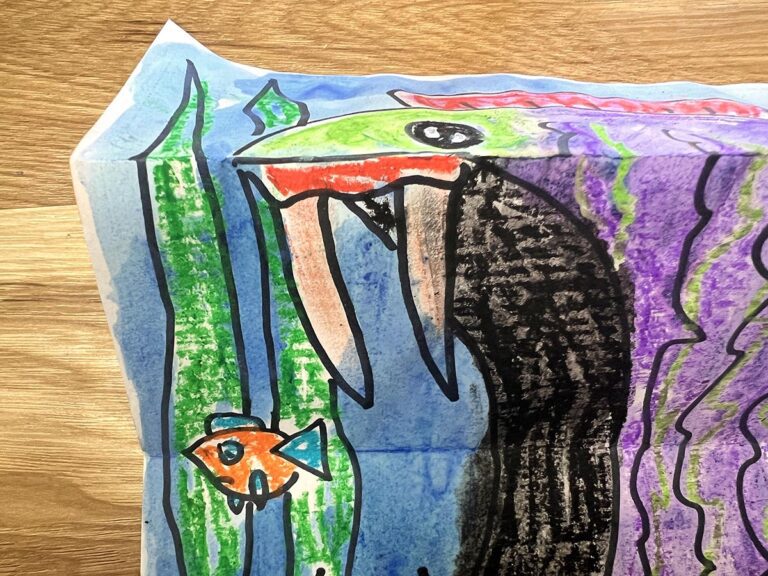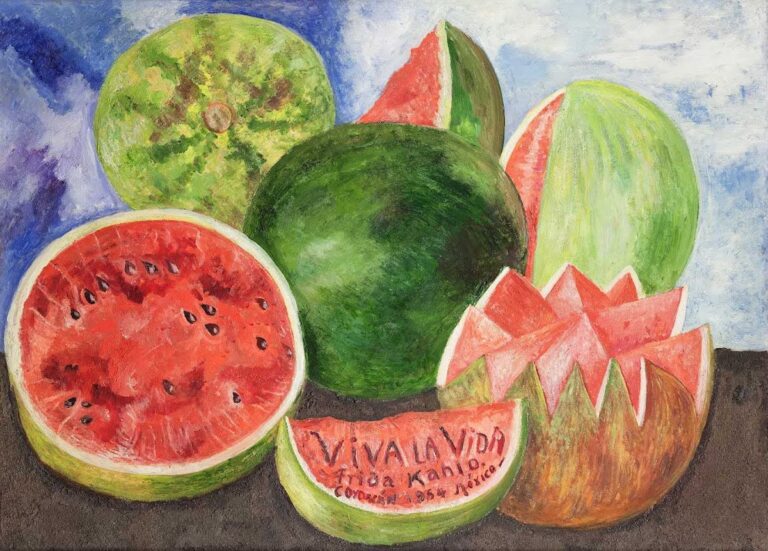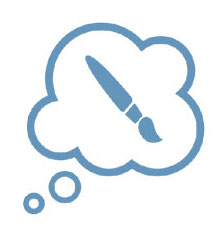 I recently completed AOE’s Choice Based Art Ed online course. I have never had a more reflective and productive professional development course in my career as an educator. But, I also haven’t experienced questioning my entire philosophy of teaching over the course of a single class.
I recently completed AOE’s Choice Based Art Ed online course. I have never had a more reflective and productive professional development course in my career as an educator. But, I also haven’t experienced questioning my entire philosophy of teaching over the course of a single class.
I entered the course with very little knowledge about TAB and choice-based approaches. I was eager to learn more but still skeptical. As we were introduced to the Choice Spectrum and related materials, my fears were eased. I learned that many choice-based classrooms still have structure and routine, sometimes even more so than traditional classrooms.
But, as we studied more materials, resources, and articles, I had the growing fear that I’d been teaching “in the wrong way.” I hadn’t given my students enough choice and voice. They were creating exactly what I wanted them to create in order to learn and achieve according to the standards. As I fought this inner battle of how to change, there was a bright light of hope. I discovered Flex Time Choice, Group Choice and Boundary Choice on the Choice Spectrum.
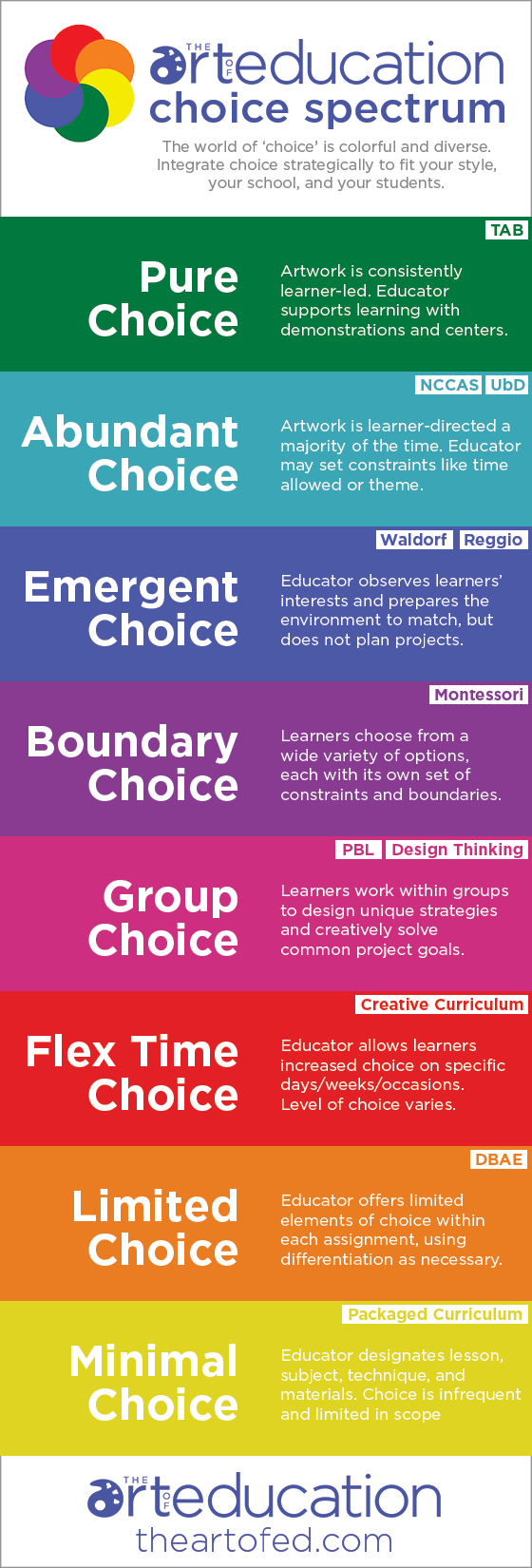
A Montessori approach to teaching falls under Boundary Choice. This allows learners to pursue a set of predetermined activities. In Montessori, these activities tend to be very focused on skill-building or concepts. This pacified my fear of students falling behind in motor skill development, objectives, and standards. This also appealed to my love of structure. My fears about teaching “all wrong” started to shift, as I began to see that a variety of approaches can be “right.” I could modify how I’d been teaching to allow students varying levels of choice.
Because of this newfound hope (and budding adoration of Montessori), I decided to revamp my kindergarten curriculum. My kindergarten curriculum was already set up to allow students to practice and explore a material before we used it for a project. I just took it to the next level by developing ideas for Montessori trays. The trays serve to encourage students to play and explore. Each tray has predetermined materials, skills, techniques, or concepts for students to focus on. Below you can see the top of my matrix and how I aligned tray ideas with my unit concepts.
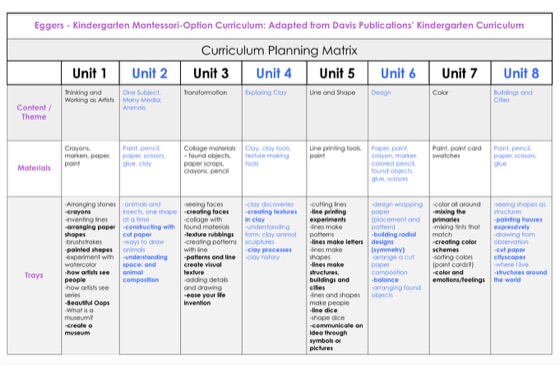
While I was on the revamp bus, I also decided to redesign and supplement my third-grade architecture unit. Originally, we would pursue one project as a class. Instead, I developed a unit that allowed students to choose among predetermined mini projects. They worked from the sheet below. So far, this has gone really well considering it’s their first time truly guiding their own learning. If you’d like to try this out with your students, click to download the mini project worksheet below!
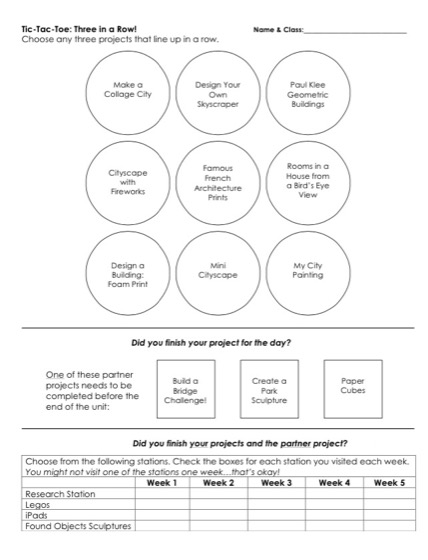
My biggest takeaway from the course was more than the documents and toolkits I created. It was an understanding that there is no one, or “more right”, way to teach art. The more knowledge you gain about the world of art education and varying philosophies, the more effective, innovative, and relevant you will become. I learned to open myself up to change and adapt even though it was scary. My students will continue to benefit from an evolving curriculum that ensures their success and engagement.
Have you taken AOE’s Choice Based Course? What was your biggest takeaway?
Where do you fall on the Choice Spectrum?
Magazine articles and podcasts are opinions of professional education contributors and do not necessarily represent the position of the Art of Education University (AOEU) or its academic offerings. Contributors use terms in the way they are most often talked about in the scope of their educational experiences.

